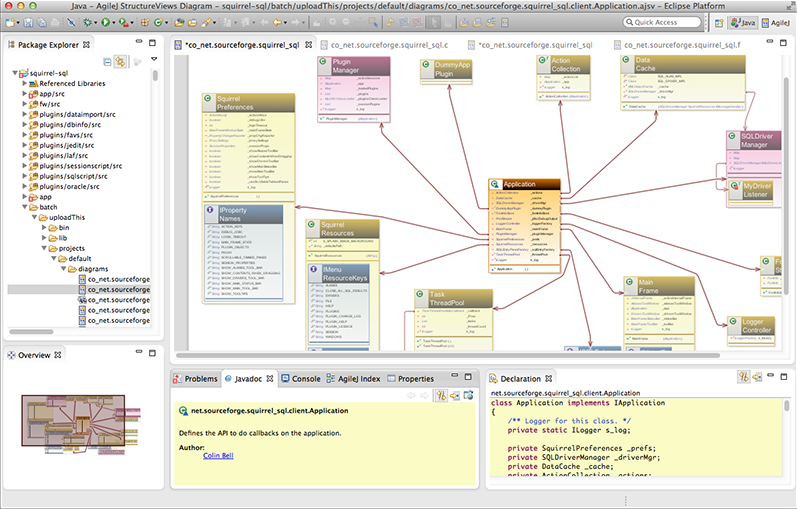
- #Eclipse sequence diagram generator for free
- #Eclipse sequence diagram generator how to
- #Eclipse sequence diagram generator install
- #Eclipse sequence diagram generator software
Basically, anything which would make it possible on a normal diagram to have meaningful semantic elements not visible on the diagram is forbidden. In order to guarantee the strong guarantee described above, some of the features present on normal diagrams are not supported, or even completely disabled on sequence diagrams. Most of the specific features and restrictions of sequence diagrams compared to other diagrams derive from this strong guarantee that at all time, the graphical (vertical) order of the elements you see on the diagram match exactly the semantic order of the events which exist in the underlying model and the horizontal order of the instance roles you see on the diagram match exactly the semantic order of the corresponding elements which exist in the underlying model.įrom the specifier point of view, this means that sequence diagrams can only be defined on meta-models in which you can provide a total ordering of the events represented, and that you can reorder these elements in a predictable way (see the description of the Keeping the example above, moving executionĮ1 will trigger changes in the semantic model to move the corresponding event of This is very different from what happens in other diagrams, where most graphical repositioning of elements are only cosmetic. Moving elements on a sequence diagram may trigger changes in the underlying semantic model to reflect the new event order implied by the positions you changed.

#Eclipse sequence diagram generator software
The canonical case is a UML Sequence Diagram (where the notation comes from), which represents the messages exchanged between objects in a software system.

Typically, they representĮvents sent and received between some entities over

#Eclipse sequence diagram generator for free
Obeo UML Behavioral viewpoint (available for free at ) which is based on the Eclipse Foundation’s UML2 meta-model.Īs their name says, sequence diagrams are meant to represent ordered sequences of elements. The resulting diagram is available in the the specification of a UML sequence diagram editor. This tutorial is based on an example, i.e. It has been written for software architects who want to specify sequence diagrams on their own meta-models.
#Eclipse sequence diagram generator how to
This document describes how to specify sequence diagram modelers with Sirius.

#Eclipse sequence diagram generator install
This tool isn’t available on the Diver web page, but I’d be happy to send you a zip file that you can use to install it in your Eclipse workbench with, though.Sequence Diagrams Specifying Sequence Diagram Editors You can expand and collapse all of the activation boxes, packages, combined fragments, etc., so that you end up with only the level of detail that you want (Hello World, for example, will generate a diagram of over 100 000 calls if you use a naive approach). It has the advantage that the diagrams are 100% interactive. That will be added in a version that will be released in the next week or two, though.Īlso, I have another small tool that simply generates sequence diagrams from Java code. It also can’t natively export to a graphics file yet. It might be a little heavyweight for what you want right now as well. If you want a sequence diagram of the runtime behavior of your program, you can use my tool “Diver”.


 0 kommentar(er)
0 kommentar(er)
